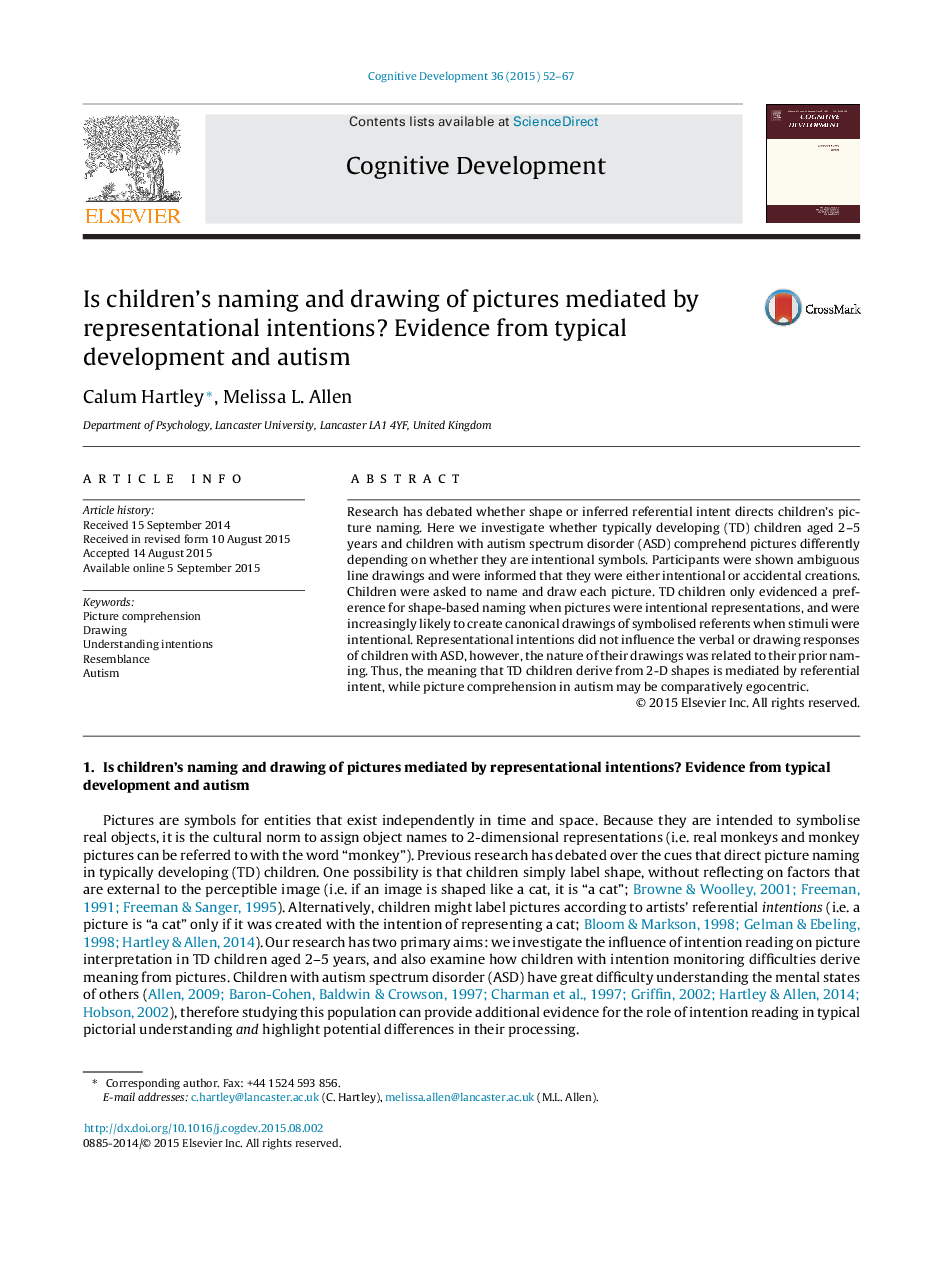| کد مقاله | کد نشریه | سال انتشار | مقاله انگلیسی | نسخه تمام متن |
|---|---|---|---|---|
| 916488 | 1473347 | 2015 | 16 صفحه PDF | دانلود رایگان |
• Pictorial understanding qualitatively differs in typical development (TD) and autism.
• Artists’ representational intent mediates how TD children name and draw 2-D shapes.
• Children with autism do not reflect on intentions when comprehending 2-D shapes.
• For TD children, the meaning of a picture is not determined entirely by resemblance.
• Picture comprehension in autism may be increasingly egocentric.
Research has debated whether shape or inferred referential intent directs children’s picture naming. Here we investigate whether typically developing (TD) children aged 2–5 years and children with autism spectrum disorder (ASD) comprehend pictures differently depending on whether they are intentional symbols. Participants were shown ambiguous line drawings and were informed that they were either intentional or accidental creations. Children were asked to name and draw each picture. TD children only evidenced a preference for shape-based naming when pictures were intentional representations, and were increasingly likely to create canonical drawings of symbolised referents when stimuli were intentional. Representational intentions did not influence the verbal or drawing responses of children with ASD, however, the nature of their drawings was related to their prior naming. Thus, the meaning that TD children derive from 2-D shapes is mediated by referential intent, while picture comprehension in autism may be comparatively egocentric.
Journal: Cognitive Development - Volume 36, October–December 2015, Pages 52–67
